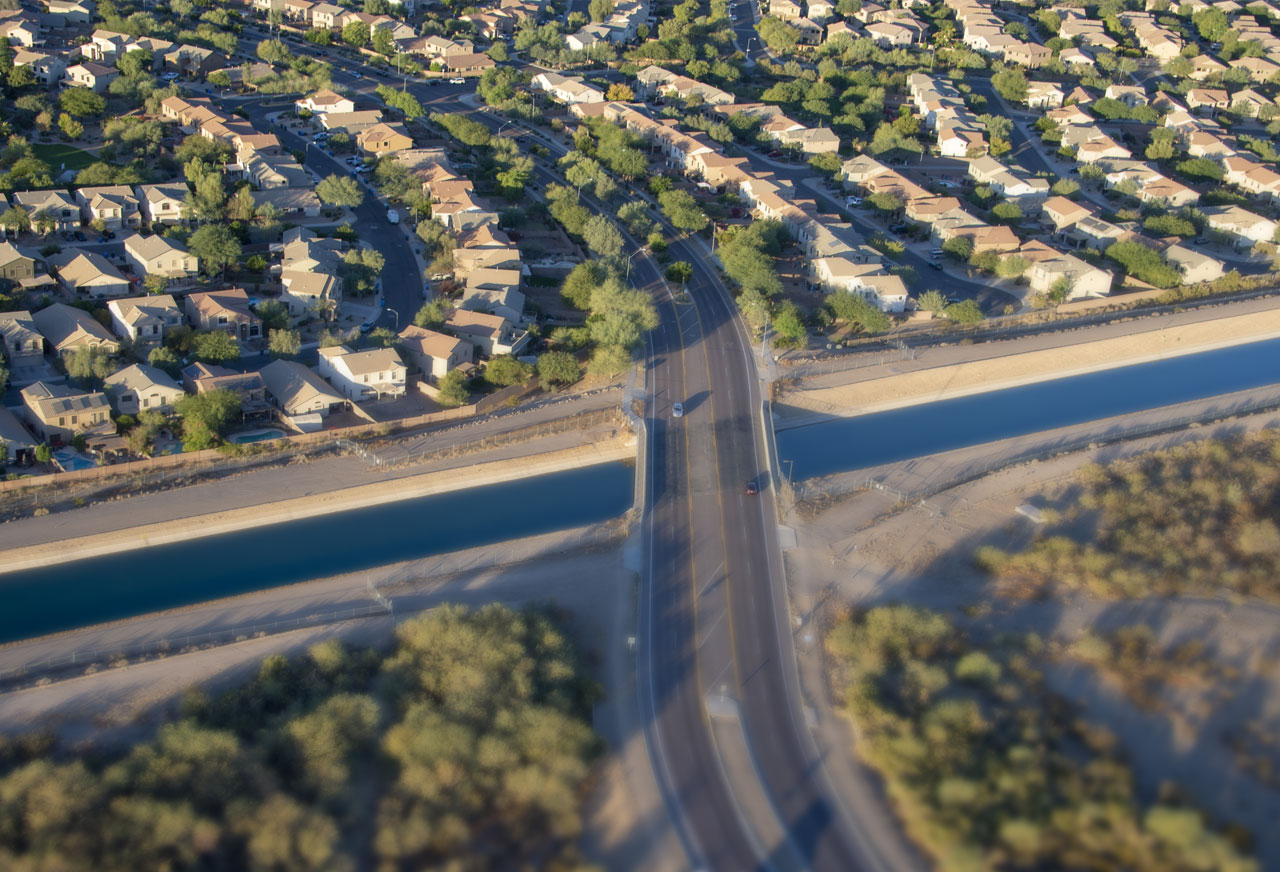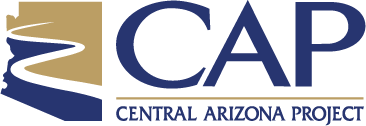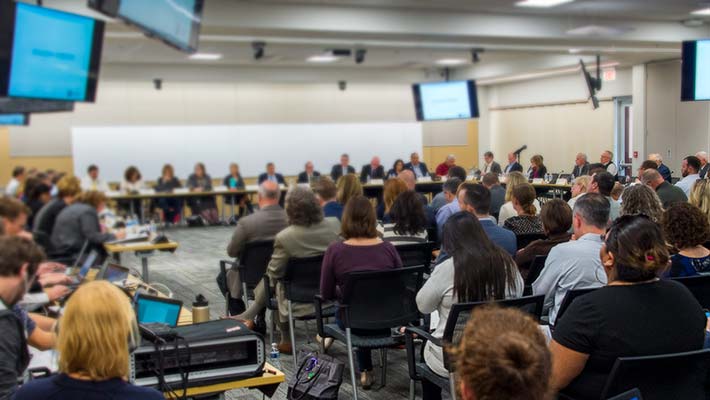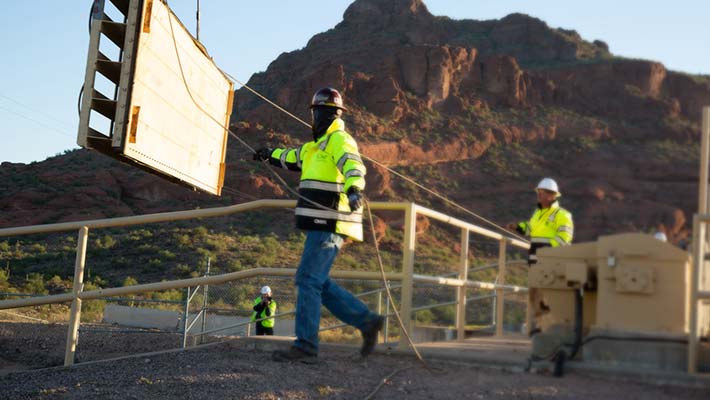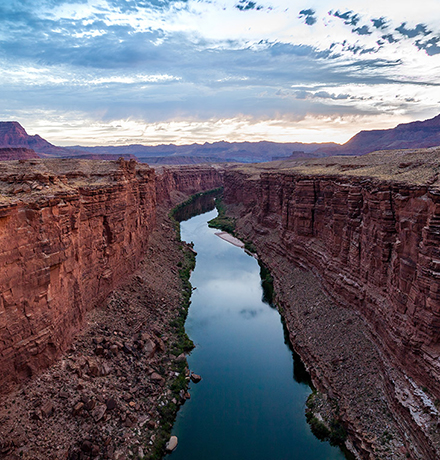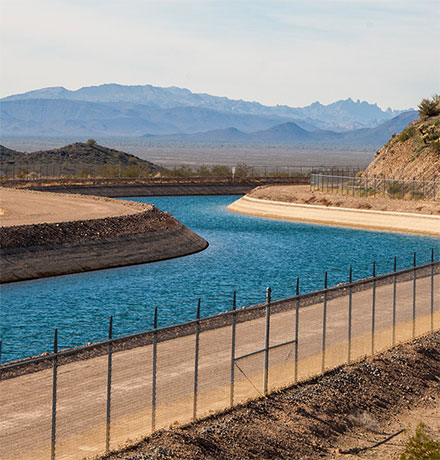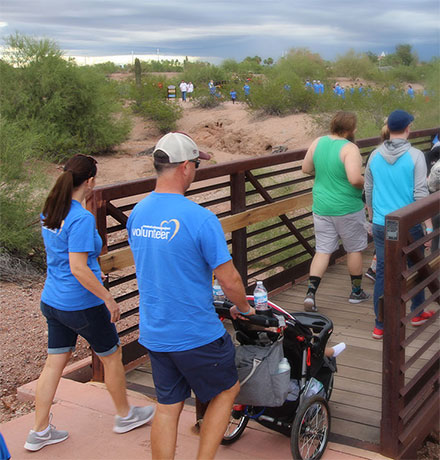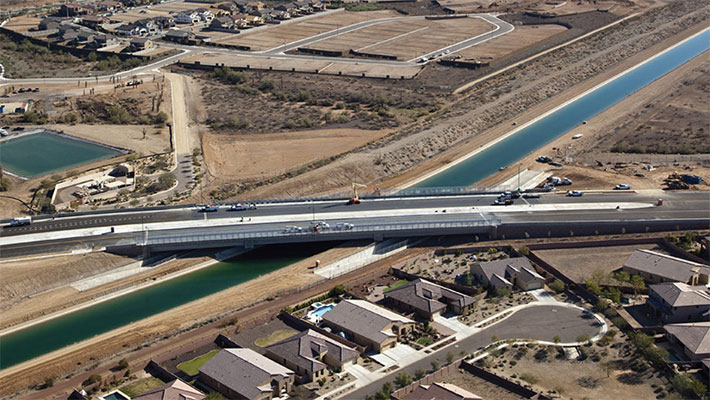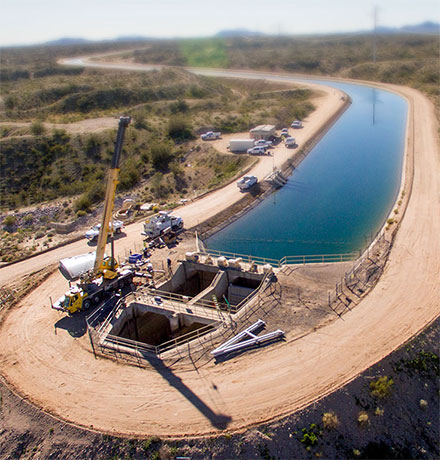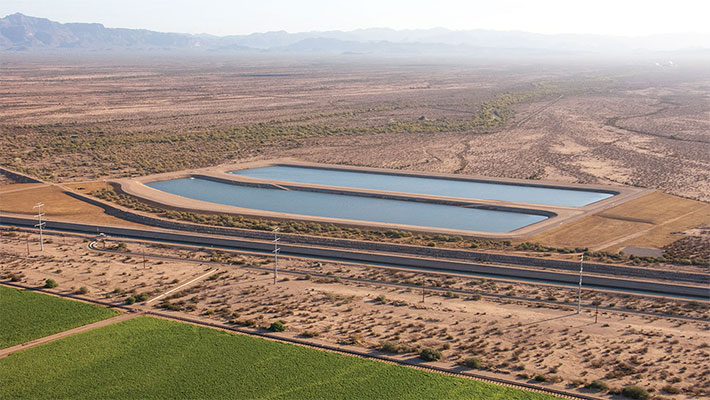History of CAP
CAP was a Vision for Arizona
In the early 20th century, Arizona’s leaders knew the state’s future depended on a water supply that was secure, stable and renewable. They pursued that vision; the result was Central Arizona Project (CAP), a 336-mile system that brings Colorado River water to central and southern Arizona, delivers the state’s single largest renewable water supply and serves 80% of the state’s population.
Arizona knew the importance of water
In the early 1900s, the seven states that share the Colorado River Basin – Arizona, California, Colorado, Nevada, New Mexico, Utah and Wyoming – negotiated for shares of its water. Ultimately, the states were divided into the Upper Basin and Lower Basin and each basin was allocated 7.5 million acre-feet (MAF) of water. Arizona, Nevada and California comprise the Lower Basin and receive 2.8 MAF, 300,000 AF and 4.4 MAF respectively. The 1944 U.S.-Mexico Water Treaty provides 1.5 MAF of Colorado River water to be delivered to Mexico annually. One acre-foot equates to a yearly supply for three Arizona families.
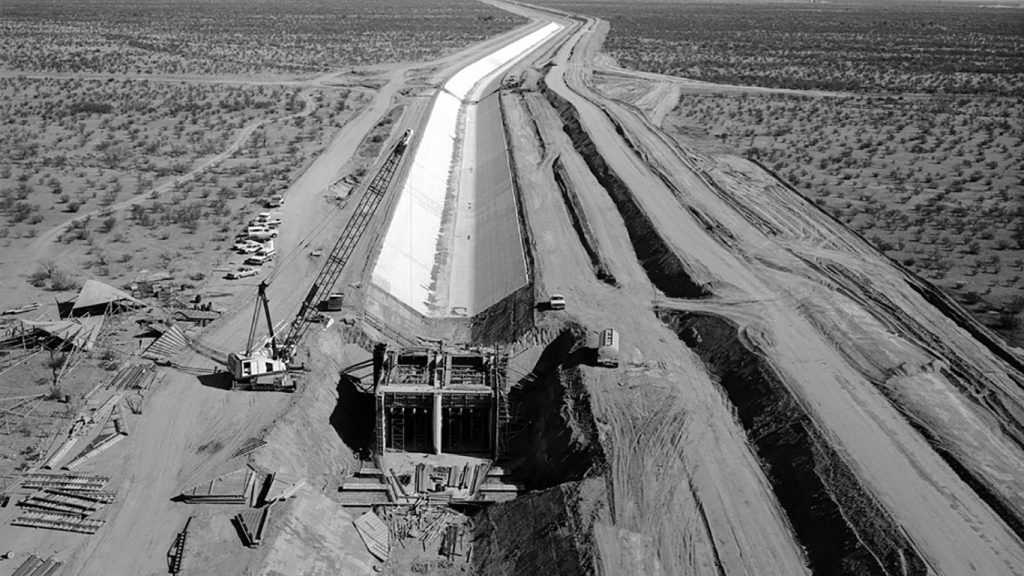
In 1968, President Lyndon B. Johnson signed the Colorado River Basin Project Act, which authorized construction of CAP by the U.S. Department of the Interior’s Bureau of Reclamation. The system would provide a way for 1.5 MAF of Arizona’s allotment to be delivered to the most populous areas of the state and reduce the use of groundwater for agriculture and other activities. In 1971, the Central Arizona Water Conservation District (CAWCD) was created to provide Arizona a means to repay the federal government for the reimbursable costs of construction and to manage and operate the physical system. CAWCD, commonly referred to as CAP, continues today to strive toward the CAP vision.
CAP Story Map
The canal system stretches 336 miles, lifts the water more than 2,900 feet in elevation over the course of the system and includes 14 pumping plants, one hydroelectric pump/generating plant at New Waddell Dam, Lake Pleasant storage reservoir, 39 radial gate structures to control the flow of water and more than 50 turnouts to deliver water.
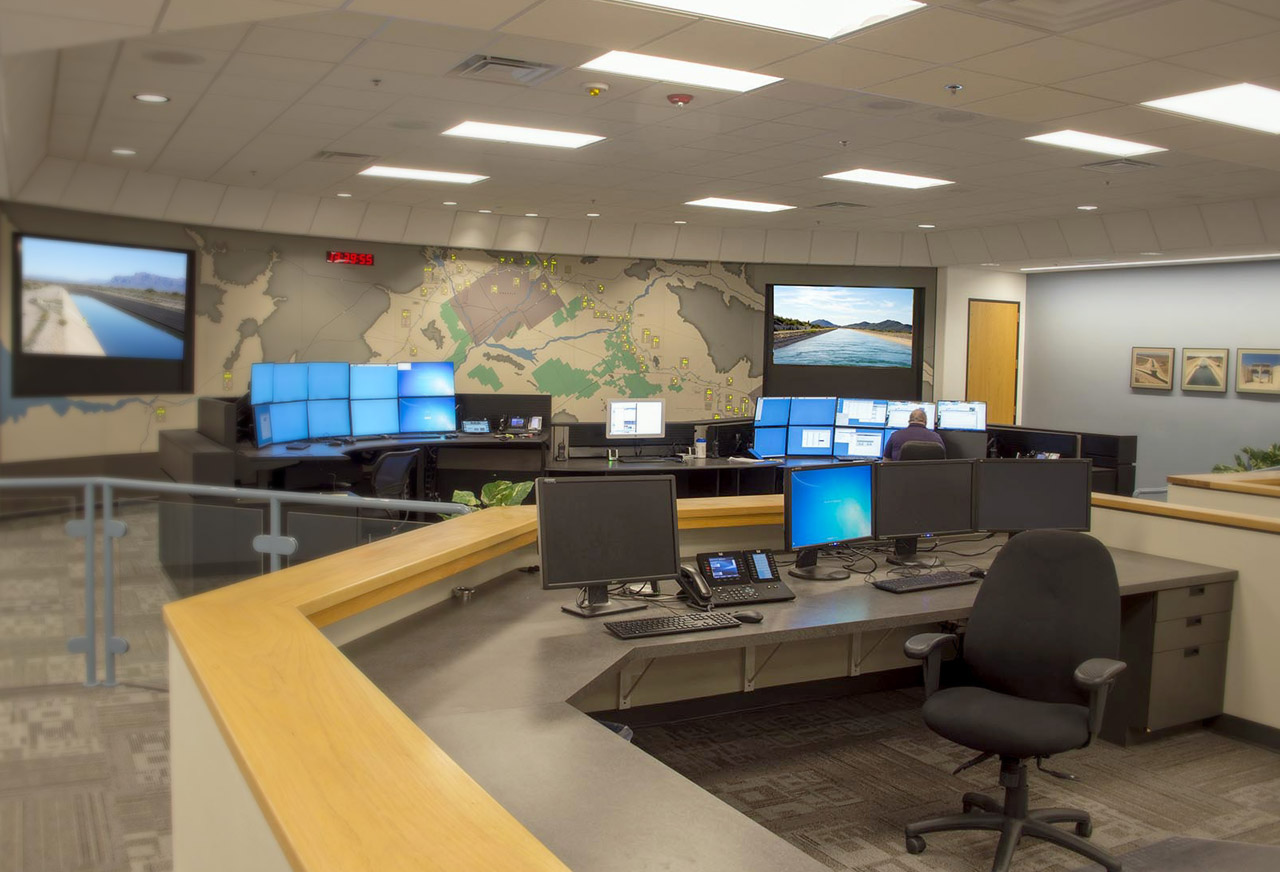
System Facts:
Reach 1 is the first section of the canal and is wider and deeper than the rest of the system. It acts as an internal reservoir system and holds 20% of all the water in the canal at any time.

4 tunnels are used to move water through mountainous terrain.
New Waddell Dam is nearly 5,000 feet long and forms Lake Pleasant, CAP’s storage reservoir.

The canal descends approximately 5 inches per mile.
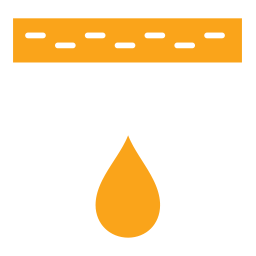
CAP owns and operates 6 recharge projects where water delivered by CAP is stored.

As water in the canal progresses west to east, the size of both the pumping plants and aqueduct diminishes.
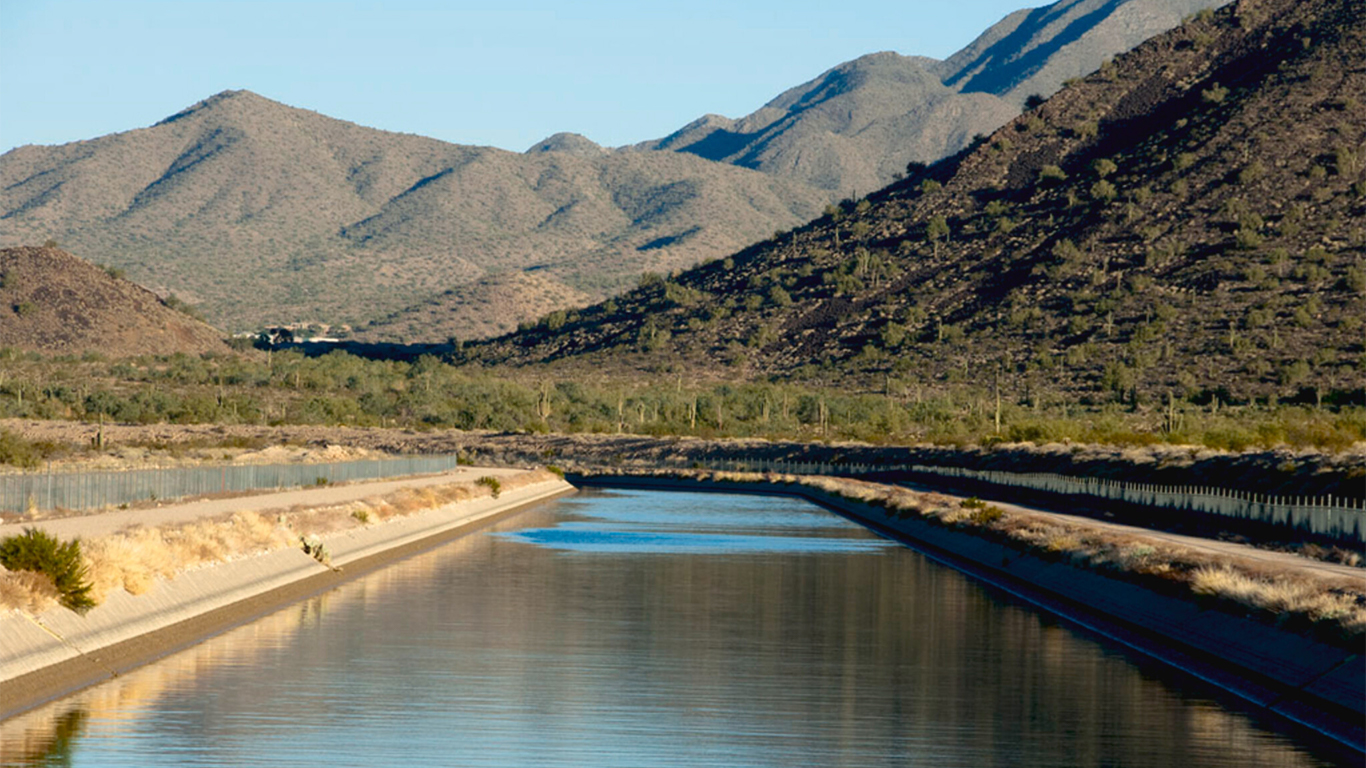
CAP water is important to Communities and Industries
CAP typically has more than 60 water users that fall into three user groups. They use CAP’s Colorado River water to run businesses, water crops and maintain households, all of which is critical to the quality of life in Arizona.
CAP Water is Key to our Economy
Few natural resources are as precious as water, and by CAP providing reliable, renewable Colorado River water, the Arizona economy is stronger and residents can enjoy a higher quality of life.
Repayment and Revenue
CAP generates revenue in a variety of ways to fund its operation and maintenance and to fulfill repayment obligations to the federal government and bondholders. Revenue is generated by the sale of water and power; capital and facility-use fees paid by water users; property taxes paid by non-Indian reservation residents of Maricopa, Pima and Pinal counties; and investments.
The price of water is determined annually by the CAWCD Board of Directors based on projections of energy, operation, maintenance and replacement costs. As a public entity, CAP does not make a profit and has a responsibility to provide a reliable water supply at a reasonable price.
